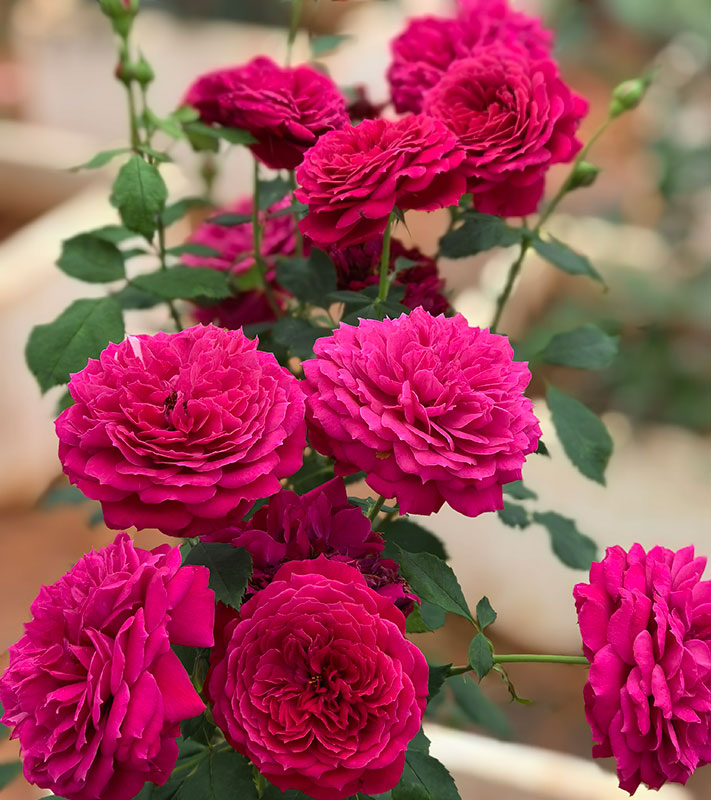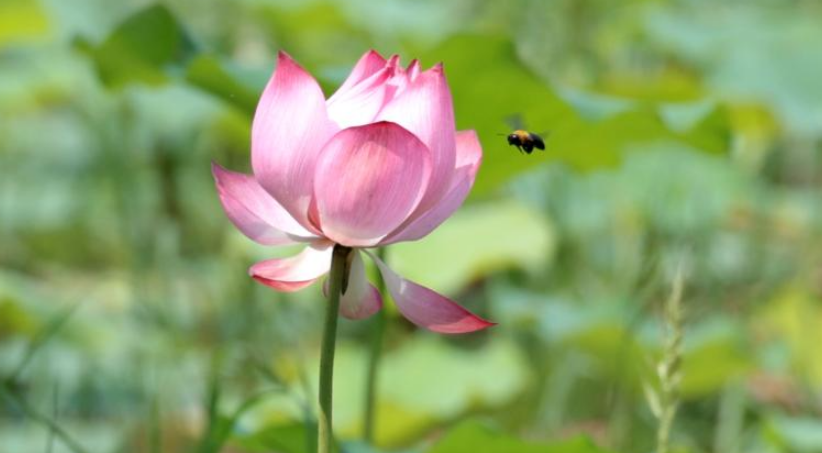Floral expert dedicated to developing new varieties of Chinese roses

Photo shows the base of Rosa chinensis, commonly known as the Chinese rose, established by Li Shubin and his team in Yongde county, Lincang city, southwest China’s Yunnan Province. (People’s Daily Online/Cai Shujing)
A village in Yongde county, Lincang city, southwest China’s Yunnan Province presents a stunning view: neatly arranged rows of blooming Rosa chinensis, commonly known as the Chinese rose, stretch out like a sea of flowers.
For a long time, despite its rich germplasm resources, Yongde has been overlooked as a major player in the rose industry, much like how a good wine can go unnoticed if its too far off the beaten path.
This was a nationwide issue, as discovered in 2012 by Li Shubin, a doctoral student at the time. During a research visit to France’s National Research Institute for Agriculture, Food and Environment (INRAE), he realized that the lack of Chinese developed varieties of the Chinese rose was perplexing even to foreigners.
That was particularly striking given that China possesses about half of the world’s wild Rosa chinensis and Rosaceae resources and Yunnan accounts for half of the national total.

Members of Li Shubin’s team work at the base of the Chinese rose in Yongde county, Lincang city, southwest China’s Yunnan Province. (Photo courtesy of Li Shubin’s team)
After extensively studying the breeding and marketing of roses in Europe, Li returned to Yunnan, dedicating himself to developing new varieties of the flower.
The road of scientific research is long and arduous. Faced with challenges such as the lack of Chinese intellectual property rights for rose varieties and difficulty surpassing foreign varieties, Li led his team step by step.
“Breeding requires time for innovation; without core competitiveness, one will be eliminated by the market, and the team will struggle to continue,” he said. Guided by market demand, he combined academic research with practical application, establishing an enterprise-oriented approach to integrating industry, academia, and research. To accomplish this, he established a research and development (R&D) center to improve industry-research integration.
For nearly a decade, Li and his team traveled across China collecting germplasm resources, covering a distance of over 500,000 kilometers. Through rigorous selection, the team cultivated nearly 100 varieties, with five obtaining new variety patent certificates and gaining market recognition.

Photo shows a variety of the Chinese rose developed by Li Shubin’s team. (Photo courtesy of Li Shubin’s team)
Attracted by Yongde’s rich germplasm resources of Chinese roses, suitable climate for the large-scale cultivation of high-quality Chinese roses, and supportive environment for innovation, Li moved and expanded his R&D center and established a company in the county in 2022, focusing on the development of the industry of Rosa odorata, a hybrid flowering plant of the genus Rosa native to Yunnan.
Currently, Li’s team has established a 100 mu (about 6.67 hectares) Chinese rose germplasm resource base in Yongde. It serves as a laboratory for rural revitalization, a gene bank, and a new type of research institution, gathering talents and platforms to build an integrated industrial innovation system with enterprises at the core, driving the development of Lincang’s floral industry and Yongde’s rose sector.
“Among our four R&D centers, the one in Yongde is of crucial significance because it houses over 200,000 breeding materials for Rosa odorata from abroad, including 30 ancient varieties and over 1,000 pieces of germplasm resources of more than 20 wild varieties, many of which are variants unique to Yongde,” Li said.
Li’s presence isn’t only helping to improve the state of roses in Yongde, but also improving the lives of those that live there. Villagers in the area have leased their land to the company, and in return receive rent rates higher than normal. The villagers can also receive training to become workers for the company, allowing them to work near their homes and together grow with the roses on a path to prosperity.

Photo shows a variety of the Chinese rose developed by Li Shubin’s team. (Photo courtesy of Li Shubin’s team)
Photos
Related Stories
Copyright © 2024 People's Daily Online. All Rights Reserved.









